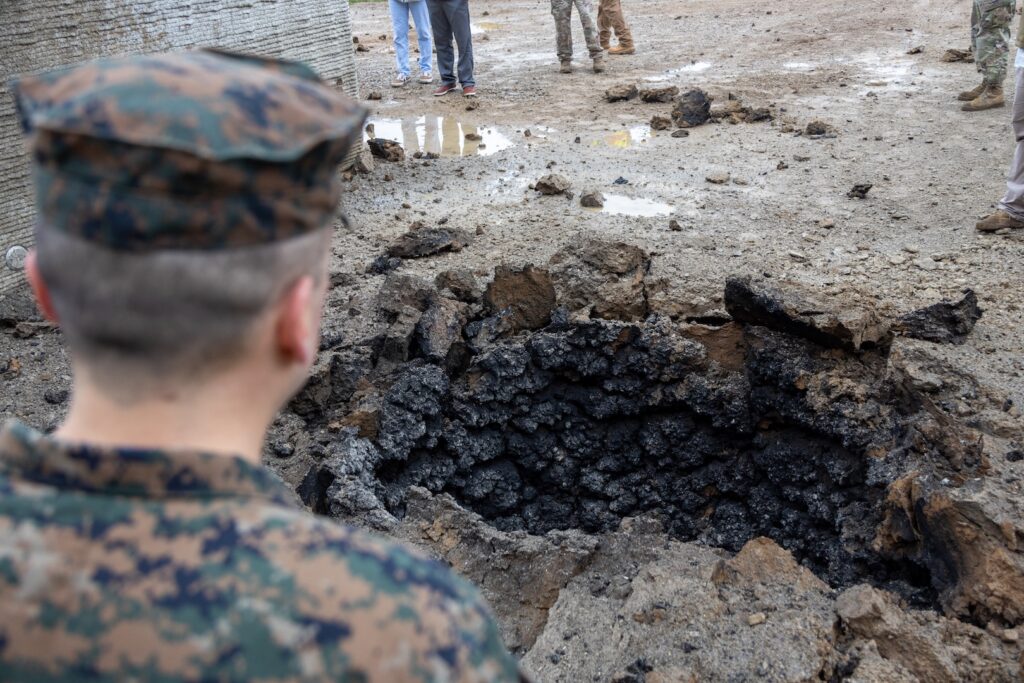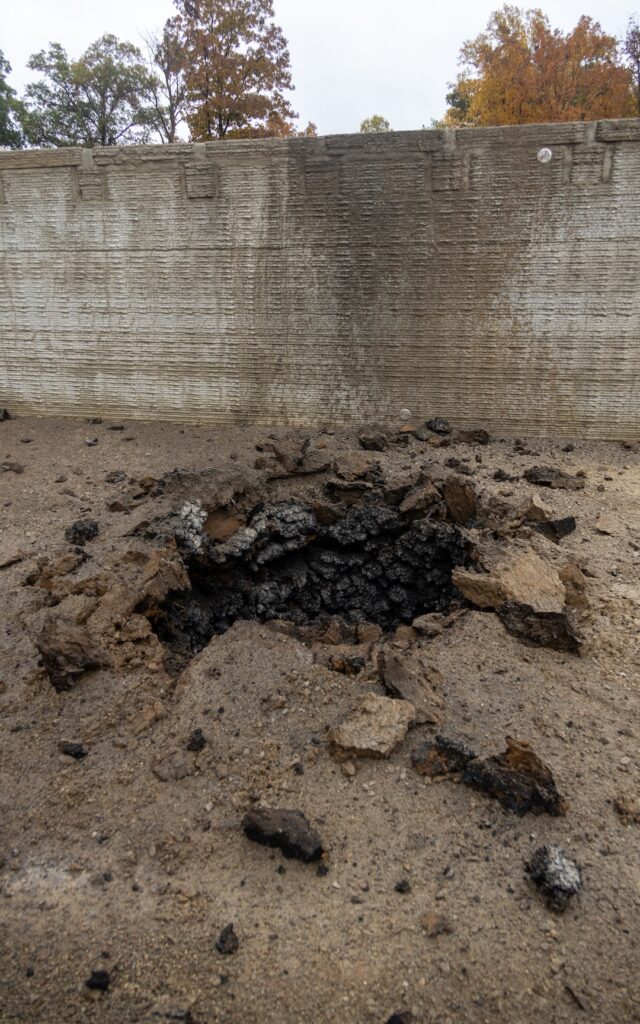At Camp Atterbury, Indiana, in October 2023, the US Army Corps of Engineers (USACE) demonstrated blast testing of concrete structures built with additive construction (AC) techniques to other members of the US armed forces from the Army, Air Force, and Marines, including the Marine Innovation Unit (MIU). Part of the US Marine Corps (USMC) Forces Reserve, the MIU was formally activated in May 2023 to support the USMC Force Design 2030 (FD203).
The USMC announced FD2030 in March 2020 as a restructuring plan intended to modernize the USMC and enable a closer working relationship with the US Navy, in order to prepare the USMC for any potential naval war with China. Two major components of the latest update to FD2030 are talent management and training and education, in order to “better align individual abilities, skills, and desires with the warfighting needs of the Service” and “enable greater experimentation with FD2030 concepts and capabilities.”

Thus, the five-day exercise at Camp Atterbury, in which a full-size building was 3D printed in 18 hours and then subjected to blast testing, is precisely the sort of study at the heart of the MIU’s mission. According to Megan Krieger, the USACE’s program manager for AC, this was the first time a full-size building was 3D printed as part of controlled detonation testing:
“We trained Air Force, Army and Marines on how to go through and print,” Krieger told America’s Engineers, the USACE’s house publication. “We were in a classroom setting where we trained them on everything from the materials development all the way through to operating the computer and completing the construction process. The goal is to do expedient construction to really benefit the war fighters and to essentially reduce the logistics to be able to print with locally available materials. We are not using proprietary materials; we go into a site and we are able to print within days of us arriving.”
Marine Corps Maj. Max Wineland of the MIU, an observer of the demonstration, explained, “There were two main reasons the MIU got involved. One, there was a call to bring in subject matter experts to participate in the build using this 3D printing technique to provide the team feedback. The second main reason is so that we’re staying abreast of new and upcoming technology that is being developed by the [USACE] that the Marine Corps might be interested in pursuing in the future.”

Even amid the vast multitude of additive manufacturing (AM) projects that the US military has unveiled over the last year, the exercise at Camp Atterbury stands out as a particularly representative example of what’s driving DoD interest in AM. First, the USACE demonstration of new capabilities to representatives from the other branches encapsulates the ability to leverage AM to quickly share new technological advances across as full a range of military personnel as possible.
Additionally, detonation testing isn’t just important from the perspective of the US’s ability to 3D print blast-resistant structures. Insofar as the US’s main source of strategic competition, China, is also undergoing rapid R&D in the AC space, it is equally important for DoD to understand the potential for 3D printed buildings to resist explosives from the inverse perspective.

Finally, given the newness, potential disruptiveness, and unique complexity involved in AC, even compared to the other most cutting-edge areas of AM, the success of concrete printing will likely be more dependent on long-term support from the US government than any other additive technology. In turn, those looking for ways to track the US government’s progress in building up Industry4.0 technologies will want to keep an especially close eye on the evolving ways in which DoD is developing and deploying concrete printing over the next several years.
Images courtesy of America’s Engineers
Subscribe to Our Email Newsletter
Stay up-to-date on all the latest news from the 3D printing industry and receive information and offers from third party vendors.
You May Also Like
3D Printing Unpeeled: Biofuel Waste to Filament & Sustainable Photopolymers
I can’t ever remember a day with so many potentially high impact news stories have come out. In one story, we all know that there are problems with the safety...
Finnair Hires AM Craft to 3D Print Plastic Parts for Aircraft Interiors
Riga-based AM Craft, a supplier specialized in 3D printing aviation components and certified under EASA Part 21G, announced a significant achievement today. The company will assist in upgrading Finnair’s A320...
3DPOD Episode 198: High Speed Sintering with Neil Hopkinson, VP of AM at Stratasys
Neil Hopkinson, a pioneering 3D printing researcher, played a pivotal role in developing a body of research that is widely utilized today. He also invented High Speed Sintering (HSS), also...
3D Printing Webinar and Event Roundup: May 12, 2024
Webinars and events are picking up in the AM industry this week! ASTM International continues its Professional Certificate Course and Stratasys continues its advanced in-person trainings, while 3D Systems is...
































